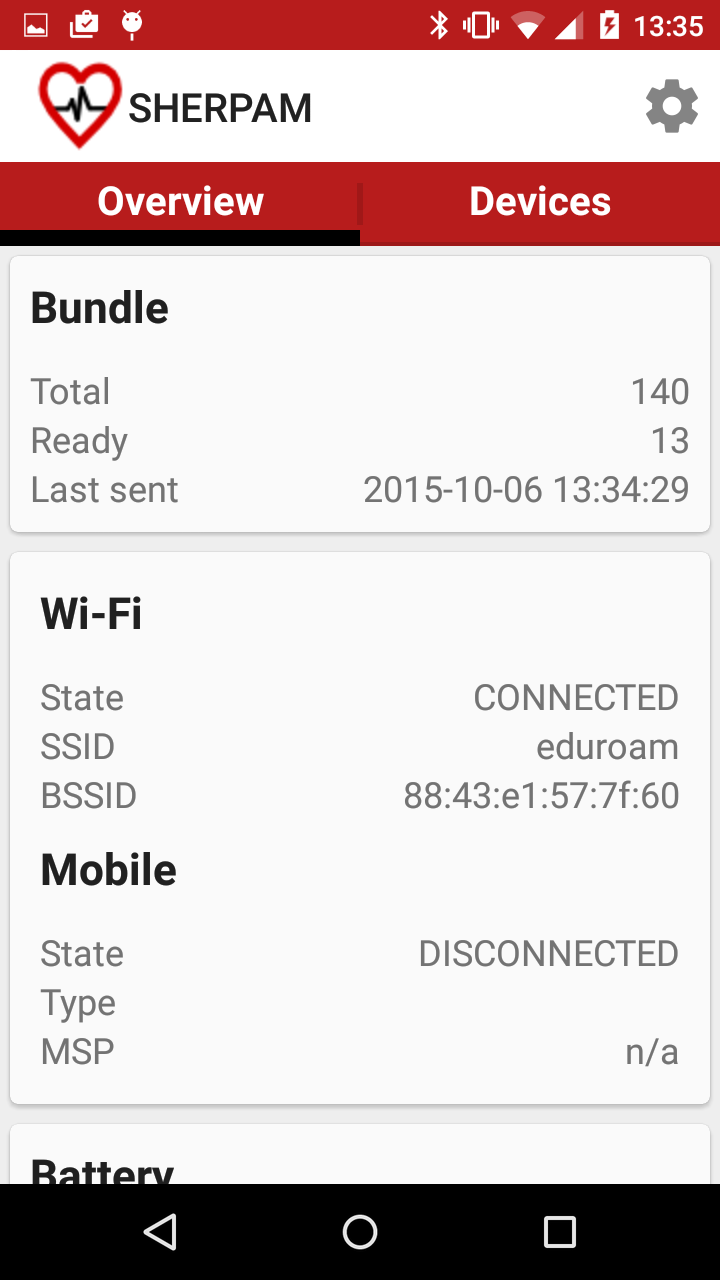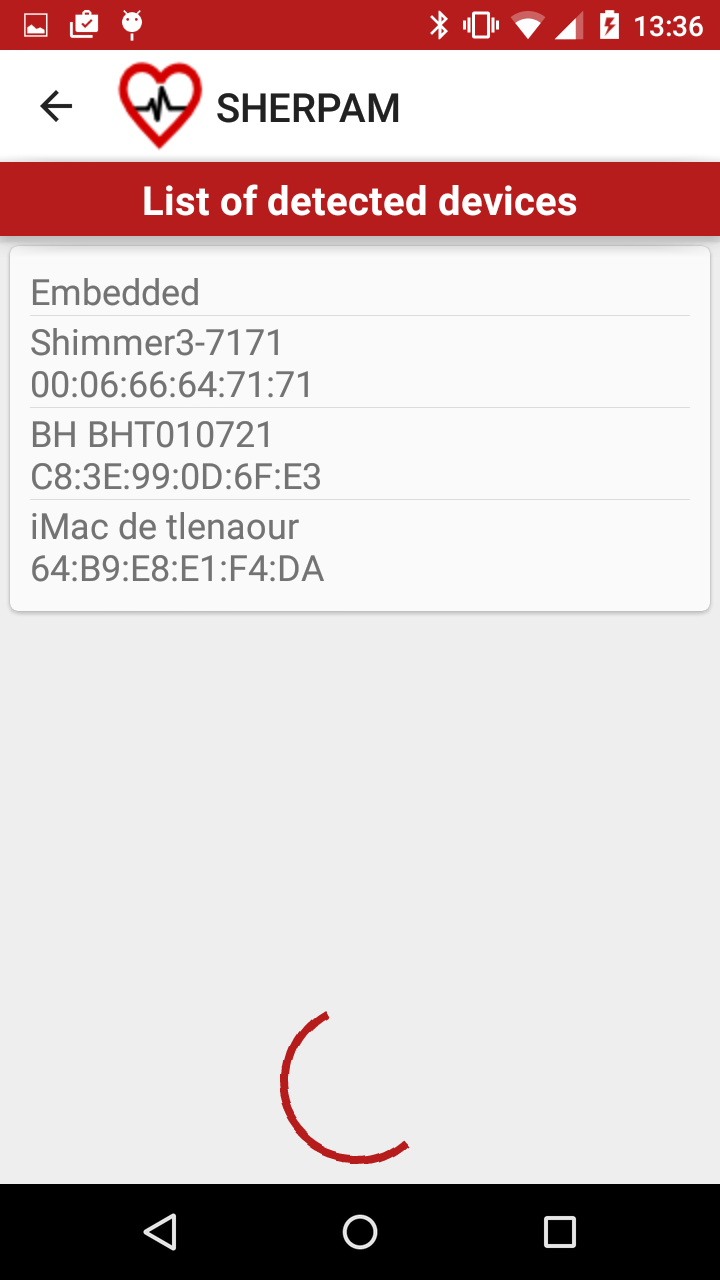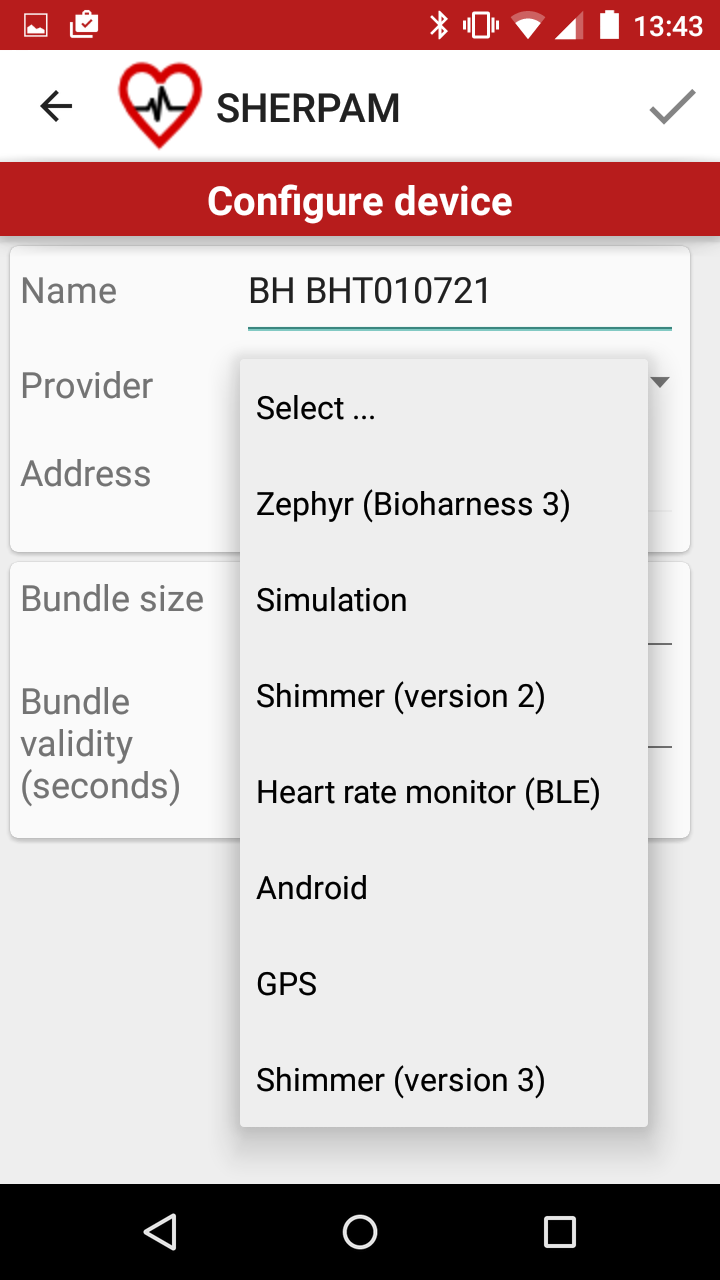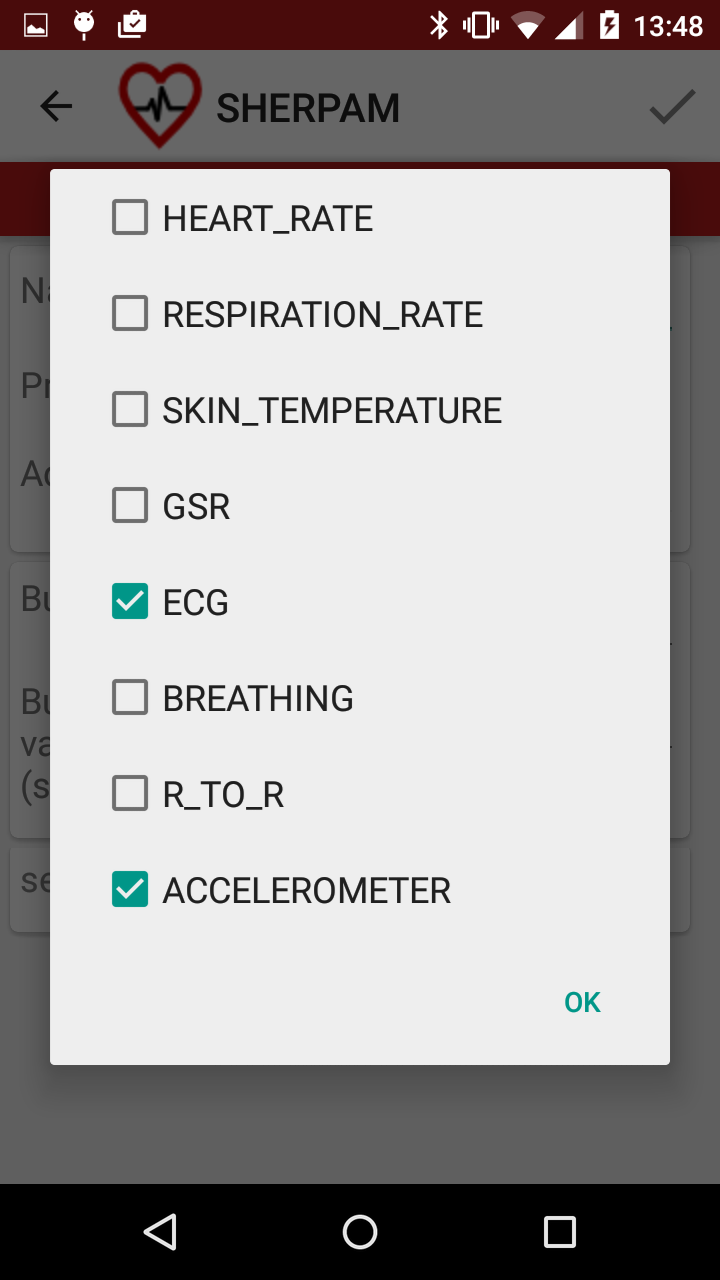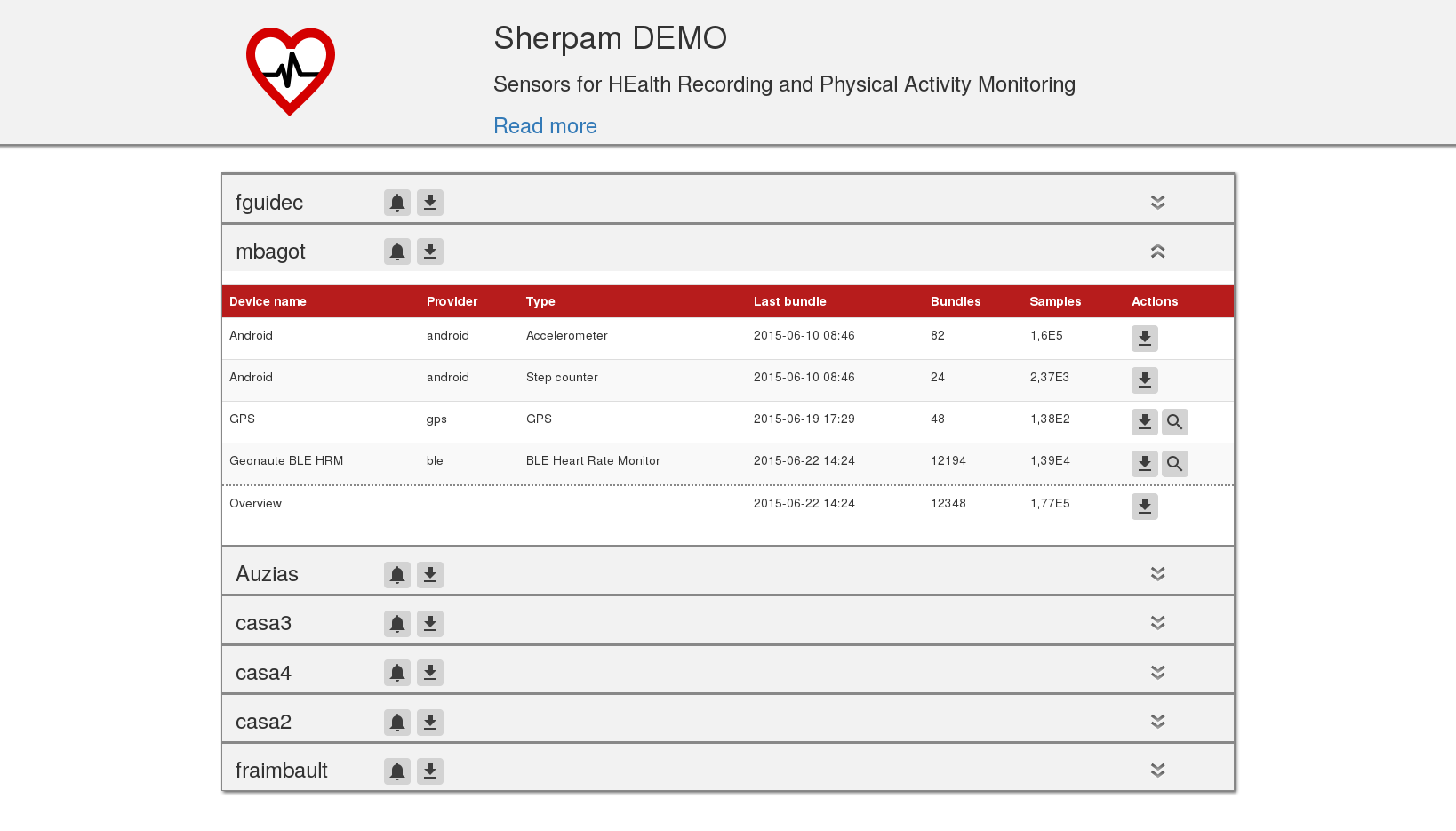Challenges
Project Sherpam aims at monitoring continuously the health status of people during their daily activities. A system for data acquisition, transmission, and processing is therefore required that meets the following criteria:
- Extensibility
Since distinct pathologies may require different types of data the system should not be limited to a pre-defined, immutable set of sensors, but it should on the contrary be extensible so as to easily accommodate new types of sensors whenever needed; - Self-sufficiency
The system should allow that data acquired by sensors be processed either “locally” or on a remote site. Local processing makes it possible for the sensing system worn by a subject to run autonomously –though possibly in a degraded mode– when no communication network is available. In contrast remote processing makes it possible to run advanced (CPU intensive) algorithms on the data collected by the sensors. - Agility
The system should be agile regarding network connectivity, switching from cellular (2.5G/3G/4G) networks to Wi-Fi hotspots depending on their availability, but also depending on other parameters such as the nature of the data to be transmitted or the power consumption involved when using each kind of network. - Disruption-tolerance
The system should be able to tolerate disruptions in network connectivity, including long disruptions as can be observed in “white zones” that are not covered by any wireless network.
Achievements
General architecture
No system meeting all the criteria listed in the above paragraph is openly available to date. Part of the work conducted in project Sherpam has therefore been devoted to designing and implementing a prototype system that meets these criteria. To date the source code of this system is composed of about 170 Java classes, which together contain about 17.000 lines of code.
An overview of this prototype system is provided in Figure 1. This system encompasses all stages of data acquisition, transmission, and processing, and each of these operations can be performed automatically and continuously.
Fig 2. Screenshots taken from the Android application deployed on the gateway
Since the Android OS does not allow an application to load external classes at runtime, an original plugin system has been developped for this project’s Android app. With this plugin system, software modules can be “plugged in” the application at any time, each module being designed to drive a specific type of sensor. With this feature, the Android app is highly modular, as new types of sensors can be included at any time in the Sherpam system, without requiring any update of the app itself.
Adaptive behavior of the gateway
Communication between the gateway and the remote site relies on medium-range to long-range transmission technologies such as Wi-Fi and 2.5G/3G/4G. Since network connectivity cannot be guaranteed anywhere and anytime for a mobile device, disruption-tolerant techniques are used to ensure that no data is lost during disconnections. The Sherpam system may thus be used in challenged environments where network connectivity is erratic, for example in rural or developing regions, or in disaster-relief scenarios.
The front-end of the “remote site” is an aggregation server, whose role is to receive the bundles sent by mobile gateways, to extract the data contained in these bundles, and to store these data so they can be accessed by processing units.
A processing unit is typically an application that subscribes with the server in order to receive all data pertaining to a given patient, and to process these data continuously and autonomously, looking for interesting patterns (for examples signs of arrythmia in a stream of ECG samples). When a processing unit detects anything interesting or unusual, a notification can be sent automatically to medical staff, or directly to the patient.
A very basic processing unit has been developped to serve as a demonstrator in project Sherpam. This unit is simply a Web server (Fig. 3), which makes it possible to parse the data stored on the aggregation server, to visualize data sets, and to download selected data for further analysis.
Prospects for future work
The prototype system developed in the framework of project Sherpam is extensible. Future extensions might cover:
- The implementation of data processing algorithms to be embedded directly on the gateway, so it can run autonomously when network connectivity is disrupted.
- The implementation of advanced (and possibly resource-greedy) data processing algorithms to be run on dedicated processing units.


